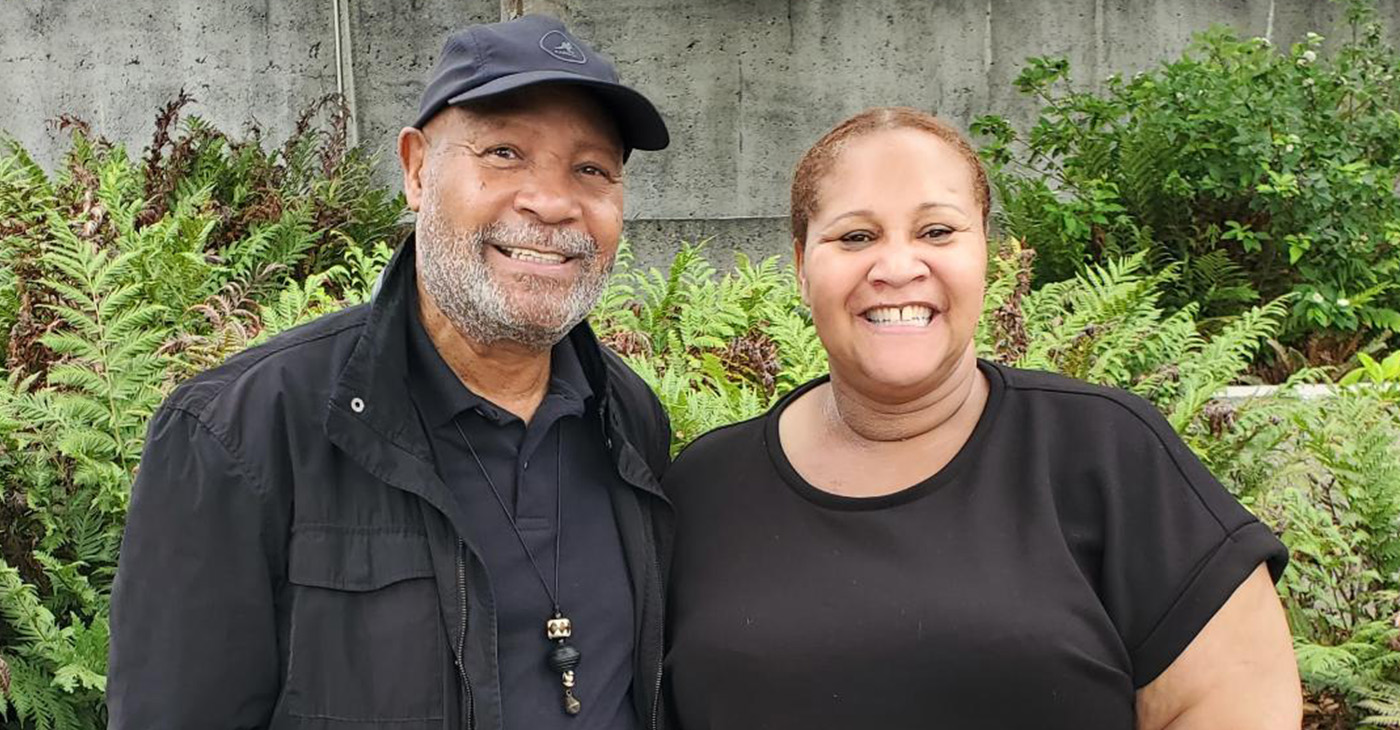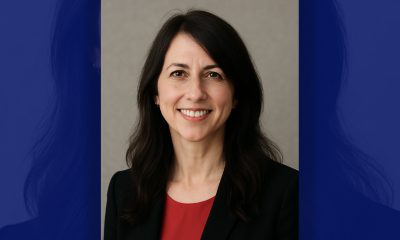Art
Black History MonthArt exhibitions at TSU Libraries
NASHVILLE PRIDE — This month, the libraries on both campuses of Tennessee State University will continue separate exhibitions with Black History Month themes.
This month, the libraries on both campuses of Tennessee State University will continue separate exhibitions with Black History Month themes. The art is available for view at no cost during regular library hours.
A LEGACY REMEMBERED – The Thompson-Wilson Collection at TSU Main Campus Library
Back in 1978 Dorothy T. Wilson, a 1942 Tennessee State University graduate, was retiring from teaching as a Health and Physical Education Teacher Specialist. She had worked for more than 30 years teaching Junior High and Senior High, and needed a hobby She found that collecting art became her passion. Her son Lamar was curating art shows in the Washington, D.C. area, and she decided to get in on the action.
“Lamar when you buy one, get two,” she would say, and she would buy the second one. That’s how she developed her Romare Bearden Collection. Dorothy also supported local artists Joe Holston and John Nelson in Washington, D.C.
Over the last forty years the Wilsons have shared these collections in more than a dozen major public and university collections and museums, including the Parthenon Galleries in Nashville, the Spellman College Museum, Fisk University, and Long Island University.
More than collecting, Dorothy has always enjoyed talking to new collectors and artists about her adventures and art with her son Lamar, her co-curator. In her home, she has some 400 holdings of fine art posters, prints and memorabilia. Now in her late nineties, Dorothy doesn’t collect much anymore. Mrs. Wilson now primarily enjoys admiring her treasures and reliving her experiences with family and friends. An opening reception and gallery talk is scheduled for February 15, from 12 Noon until 2 pm.
In His Presence… (What Would Bring A King to Town?) by Thaxton Waters at TSU Downtown Library
The title of this body of work stems from the many visits Dr. Martin Luther King Jr. spent in Nashville, TN (1960, ’62, ’64, and ‘67), ranging from speaking against the Kennedy Administration and bettering city race relations at Vanderbilt Symposiums, to gaining inspiration for his next strategic steps from local demonstrators. King, upon hearing and reading national news about the terrorism happening to Nashville’s Black residents, made multiple appearances here, while establishing strong local connections.

[/media-credit] Thaxton Waters
After touring, teaching, and talking, he witnessed that our city was ‘ground-zero’ for silent organized marches, skilled non-violent training of the students, and a plethora of intellectual activism. Famously, while giving a speech at Fisk University, he said “I came to Nashville not to bring inspiration, but to gain inspiration from the great movement that has taken place in this community.”
About the pieces in his exhibition, Waters says, “The color palette chosen and prices set are prophetic in nature revolving around Biblical themes of sacrifice, purification, and redemption. I was once told ‘It is no shame in being the slave, the shame is in the slave master.’ With that quote in mind the gold paint highlights yet masks the heroic figures as they were being tried in the fire, while leaving the perpetrators of the injustices in full view.”
This article originally appeared in the Nashville Pride.
Activism
‘I Was There Too’ Reveals the Hopes, Dangers of Growing Up in The Black Panther Party
On July 20, at the Oakland Museum of California’s Spotlight Sundays, Gabriel, the daughter of a Black Panther Party couple, Emory Douglas, minister of culture, and artist-educator, Gayle Asalu Dickson, gave a raw personal view of being raised in the middle of the Black Power Movement.

By Carla Thomas
Chronicles of the Black Panther Party are often shared from the perspectives of Huey Newton, Bobby Seale, Angela Davis, or Kathleen Cleaver. However, the view from a Panther’s child was unique on stage as Meres-Sia Gabriel performed, “I Was There Too.”
On July 20, at the Oakland Museum of California’s Spotlight Sundays, Gabriel, the daughter of a Black Panther Party couple, Emory Douglas, minister of culture, and artist-educator, Gayle Asalu Dickson, gave a raw personal view of being raised in the middle of the Black Power Movement.
Gabriel took the audience on her tumultuous journey of revolution as a child caught between her mother’s anger and her father’s silence as the Party and Movement were undermined by its enemies like the COINTELPRO and the CIA.
Gabriel remembers her mom receiving threats as the Party unraveled and the more lighthearted moments as a student at the Black Panther Party’s Community School.
The school was a sanctuary where she could see Black power and excellence in action.
It was there that she and other children were served at the complimentary breakfast program and had a front row seat to the organization’s social and racial justice mission, and self-determination, along with the 10-point platform where the party fought for equality and demanded its right to protect its community from police brutality.
On her journey of self-development, Gabriel recounted her college life adventures and transformation while immersed in French culture. While watching television in France, she discovered that her father had become a powerful post-revolution celebrity, sharing how high school and college-age youth led a movement that inspired the world.
Through family photographs, historical images projected on screen, personal narratives, and poetry, Gabriel presented accounts worth contemplating about the sacrifices made by Black Panther Party members. Her performance was backed by a jazz trio with musical director Dr. Yafeu Tyhimba on bass, Sam Gonzalez on drums, and pianist Sam Reid.

At the Oakland Museum of California, Amy Tharpe, Ayanna Reed, artist Meres-Sia Gabriel and Kenan Jones at the meet-and-greet after the “I Was There Too” multimedia production. Photo by Carla Thomas.
Gabriel’s poetry is featured in the “Black Power” installation at the Oakland Museum of California, and her father’s book, “Black Panther: The Revolutionary Art of Emory Douglas,” features her foreword. She accompanied her father on tour exhibiting his artwork from the Panther Party’s publication as Minister of Culture.
Gabriel considers her work as a writer and performer a pathway toward self-reflection and personal healing. While creating “I Was There Too,” she worked for a year with the production’s director, Ajuana Black.
“As director, I had the opportunity to witness, to create, to hold space with tenderness and trust,” said Black. “Her performance touched my soul in a way that left me breathless.”
With over two decades of musical theater experience, Black has starred in productions such as “Dreamgirls” as Lorrell and “Ain’t Misbehavin’s” Charlene. She also performs as the lead vocalist with top-tier cover bands in the Bay Area.
During the post-performance meet-and-greet in the (OMCA) Oakland Museum of California garden, Gabriel’s father posed for photos with family and friends.
“I am proud of her and her ability to share her truth,” he said. “She has a gift and she’s sharing it with the world.”
Shona Pratt, the daughter of the late BPP member Geronimo Pratt, also attended to support Gabriel. Pratt and Gabriel, known as Panther Cubs (children of the Black Panther Party), shared their experience on a panel in Richmond last year.
“Meres-Sia did a great job today,” said Pratt. “It was very powerful.”
Meres-Sia Gabriel was born and raised in Oakland, California. A graduate of Howard University in Washington, D.C., and Middlebury College School in France, Gabriel serves as a French instructor and writing coach.
Activism
The Past and Future of Hip Hop Blend in Festival at S.F.’s Midway
“The Music and AI: Ethics at the Crossroads” panel featured X.Eyee, CEO of Malo Santo and senior advisor for UC Berkeley’s AI Policy, Sean Kantrowitz, director of media and content @Will.I.A.’s FYI, Adisa Banjoko of 64 Blocks and Bishop Chronicles podcast, and Julie Wenah, chairwoman of the Digital Civil Rights Coalition.

By Carla Thomas
“Cultural Renaissance,” the first-ever SF Hip-Hop conference, occurred at The Midway at 900 Marin St. in San Francisco on July 18 and 19. Held across three stages, the event featured outdoor and indoor performance spaces, and a powerful lineup of hip-hop icons and rising artists.
Entertainment included Tha Dogg Pound, celebrating their 30th anniversary, Souls of Mischief, and Digable Planets. “Our organization was founded to preserve and celebrate the rich legacy of Hip-Hop culture while bringing the community together,” said SF Hip-Hop Founder Kamel Jacot-Bell.
“It’s important for us to bring together artists, innovators, and thought leaders to discuss how hip-hop culture can lead the next wave of technological and creative transformation,” said Good Trouble Ventures CEO Monica Pool-Knox with her co-founders, AJ Thomas and Kat Steinmetz.
From art activations to cultural conversations, the two-day event blended the intersections of AI and music. Panels included “Creative Alchemy – The Rise of the One-Day Record Label,” featuring producer OmMas Keith, composer-producer Rob Lewis, AI architect-comedian Willonious Hatcher, and moderator-event sponsor, AJ Thomas.
“The Legends of Hip-Hop and the New Tech Frontier” panel discussion featured hip-hop icon Rakim, radio personality Sway, chief revenue officer of @gamma, Reza Hariri, and music producer Divine. Rakim shared insights on culture, creativity, and his A.I. start-up NOTES.
“AI is only as good as the person using it,” said Rakim. “It cannot take the place of people.”
Rakim also shared how fellow artist Willonious helped him get comfortable with AI and its power. Rakim says he then shared his newfound tool of creativity with business partner Divine.
The panel, moderated by the Bay Area’s hip-hop expert Davey D, allowed Divine to speak about the music and the community built by hip-hop.
“Davey D mentored me at a time when I had no hope,” said Divine. “Without his support, I would not be here on a panel with Rakim and Willonious.”
Hatcher shared how his AI-produced BBL Drizzy video garnered millions of views and led to him becoming one of Time magazine’s 100 most influential AI creators.
“The Music and AI: Ethics at the Crossroads” panel featured X.Eyee, CEO of Malo Santo and senior advisor for UC Berkeley’s AI Policy, Sean Kantrowitz, director of media and content @Will.I.A.’s FYI, Adisa Banjoko of 64 Blocks and Bishop Chronicles podcast, and Julie Wenah, chairwoman of the Digital Civil Rights Coalition.
“Diverse teams solve important questions such as: ‘How do we make sure we bring diverse people to the table, with diverse backgrounds and diverse lived experiences, and work together to create a more culturally sound product,’” said Wenah.
Self-taught developer, X.Eyee said, “You have to learn the way you learn so you can teach yourself anything. Future jobs will not be one roadmap to one individual skill; you will be the orchestrator of teams comprised of real and synthetic humans to execute a task.”
Activist Jamal Ibn Mumia, the son of political prisoner Mumia Abu Jamal, greeted Black Panther Party illustrator Emory Douglas, who was honored for his participation in the Black Power Movement. Douglas was presented with a statue of a black fist symbolizing the era.
“It’s an honor to be here and accept this high honor on behalf of the Black Panther Party,” said Douglas, holding the Black Power sculpture. “It’s an art (my illustrations) that’s been talked about. It’s not a ‘me’ art, but a ‘we’ art. It’s a reflection of the context of what was taking place at the time that inspired people.
“To be inspired by is to be in spirit with, to be in spirit with is to be inspired by, and to see young people continue on in the spirit of being inspired by is a very constructive and powerful statement in the way they communicate,” Douglas said.
His work embodied the soul of the Black Panther Party, and as its minister of culture and revolutionary artist, he definitely keeps the Panther Party soul alive, and his work is everywhere.
“Brother Emory Douglas is an icon in the community,” said JR Valrey of the Block Report.
“Fifty years later, he’s still standing,” said Ibn Mumia, raising his fist in the traditional Black Power salute.
“Emory is a living legend and so deserving of this award,” Valrey said. “We have to honor our elders.”
Activism
Mayor Lee’s Economic Development Summit at Oakstop Furthers Creative Strategies for Oakland’s Future
Oakstop’s workforce development initiative, “The Oakstop Effect: WFD,” focuses on providing pathways to employment and advancement for Black adults aged 18–64. Through culturally relevant, mission-driven training facilitated by Black professionals with relatable backgrounds, the program creates supportive environments for skill-building, wealth creation, and worker empowerment.

By Carla Thomas
On Monday, Aug. 4, Oakland Mayor Barbara Lee convened the Mayor’s Economic Development Working Group at Oakstop, drawing leaders from business, workforce development, arts and culture, education, small business, and community organizations.
This initiative builds on the administration’s deep-rooted community engagement efforts, expanding on the dozens of roundtables and listening sessions conducted during Lee’s first 76 days in office.
The collaborative session aimed to shape an economic strategy rooted in equity, creativity, and community using the mayor’s five-point economic plan, including empowering small businesses, strengthening the local workforce, revitalizing Oakland’s cultural and social landscape, attracting and retaining strategic sectors, and ensuring economic opportunity for all communities.
During breakout sessions, participants shared recommendations across five focus areas: economic policy, small business support, workforce development, narrative change, and integration of arts and culture.
More than 100 participants at the meeting, which included former Alameda County Supervisor Keith Carson, Black Cultural Zone CEO Carolyn Johnson, East Oakland Youth Development Center CEO Selena Wilson, African American Sports and Entertainment Group founder, Ray Bobbitt, Executive Director of the Oakland School for the Arts Mike Oz, Visit Oakland Executive Director Peter Gamez and activist-artist Kev Choice.
“Our economic development working group aims to spark collaboration, uplift existing successes, and identify what’s needed to keep The Town open for business — vibrant, safe, and rooted in equity,” said Lee remarked at the gathering.
Oakstop founder and CEO Trevor Parham stated that the summit felt like an open community forum. “It’s critical to have as many perspectives as possible to drive solutions so we can cover not only our concerns, but fulfill our economic mission,” said Parham.
Parham says the community should expect summits and collaborations more often at Oakstop. “I’m excited about the prospects and the outcomes from bringing people from different industry sectors as well as different levels.”
Oakstop’s workforce development initiative, “The Oakstop Effect: WFD,” focuses on providing pathways to employment and advancement for Black adults aged 18–64. Through culturally relevant, mission-driven training facilitated by Black professionals with relatable backgrounds, the program creates supportive environments for skill-building, wealth creation, and worker empowerment.
“Our goal is to foster worker power for local workers, to build wealth, while building skills and redefining the workplace,” said Parham.
The program is powered through partnerships with organizations such as Philanthropic Ventures Foundation and Community Vision. Beyond workforce development, Oakstop offers co-working spaces, event venues, art galleries, and mental health and wellness programs — reinforcing its mission of community empowerment and economic mobility.
With a strategic equity framework, cultural and economic integration, and a continuous pipeline of sustainable talent, Lee plans to revitalize the Oakland economy by creating policies and opportunities that stabilize the city.
-

 Alameda County4 weeks ago
Alameda County4 weeks agoSeth Curry Makes Impressive Debut with the Golden State Warriors
-

 #NNPA BlackPress4 weeks ago
#NNPA BlackPress4 weeks agoLIHEAP Funds Released After Weeks of Delay as States and the District Rush to Protect Households from the Cold
-

 #NNPA BlackPress4 weeks ago
#NNPA BlackPress4 weeks agoSeven Steps to Help Your Child Build Meaningful Connections
-

 #NNPA BlackPress4 weeks ago
#NNPA BlackPress4 weeks agoSeven Steps to Help Your Child Build Meaningful Connections
-

 #NNPA BlackPress4 weeks ago
#NNPA BlackPress4 weeks agoTeens Reject Today’s News as Trump Intensifies His Assault on the Press
-

 Bay Area2 weeks ago
Bay Area2 weeks agoPost Salon to Discuss Proposal to Bring Costco to Oakland Community meeting to be held at City Hall, Thursday, Dec. 18
-

 #NNPA BlackPress4 weeks ago
#NNPA BlackPress4 weeks agoFBI Report Warns of Fear, Paralysis, And Political Turmoil Under Director Kash Patel
-

 Activism2 weeks ago
Activism2 weeks agoMayor Lee, City Leaders Announce $334 Million Bond Sale for Affordable Housing, Roads, Park Renovations, Libraries and Senior Centers



























































